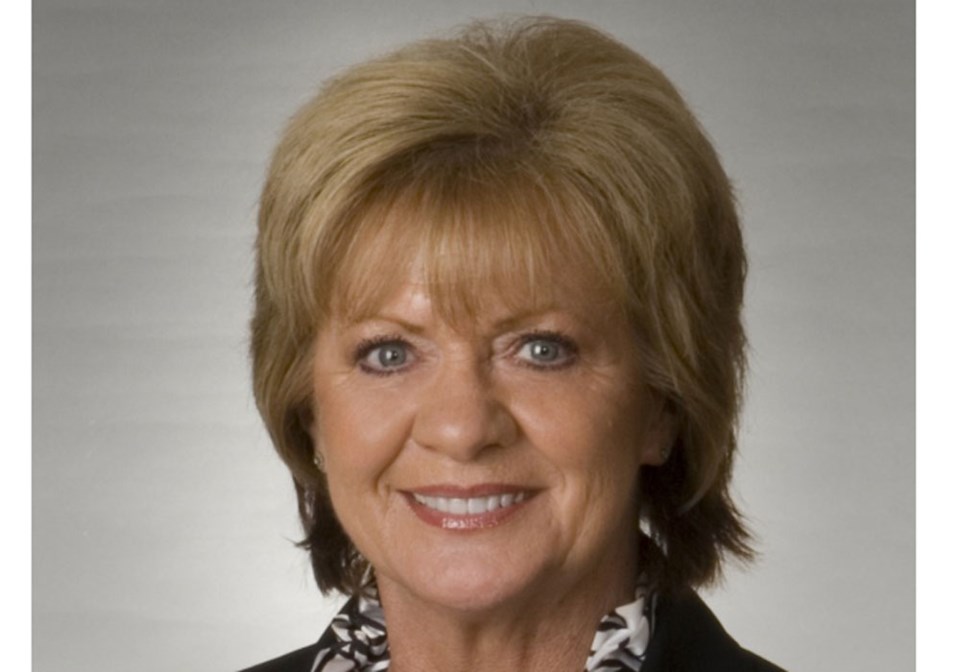The provincial legislature's fall session closed last week following its 25 sittings.
Estevan MLA Doreen Eagles noted Saskatchewan continues to reap the benefits of a booming economy driven by the energy sector.
"This fall Saskatchewan's population is at an all-time high with 1.1 million people," noted Eagles, regarding the boom across the Prairies.
"Growth brings many opportunities, but it also brings challenges. Those are ensuring that the citizens of this province have services that they and their family need. That growth allows us to invest in health care, infrastructure, education and housing."
A common drawback of growth is an increase in crime, which the Energy City has experienced, and Eagles noted that on Dec. 9 Christine Tell, minister of Corrections and Policing, announced $315,000 for Estevan in funding from the Targeted Police Initiative.
"These grants support the additional 120 police officers in communities across the province that was election promise of ours," said Eagles, regarding the funding to add officers in Estevan.
The addition of a CT scanner in the St. Joseph's Hospital is something local officials have been lobbying to receive for years, and Eagles said she is continuing to lobby for the much-needed equipment.
"When the premier met with a group last fall, it was something that would be considered in the upcoming budget, so I continue to lobby very hard for that," she said.
As far as infrastructure projects in the Estevan area are concerned, Eagles noted construction has begun on the Estevan truck bypass, commenting on the lengthy process to get plans for the bypass finalized.
"I know it took a long time, but you're dealing with expropriation of lands and engineering and stuff like that."
She also said planning would begin for the twinning of Highway 39 and 6 between Estevan and Regina.
The government noted in a press release last week there is a need to ensure there is training available for people to be able to fill highly sought after skilled trades positions. Eagles noted Rob Norris, minister of Advanced Education, was in Estevan last week touring the Saskatchewan Energy Training Institute, which may provide one avenue for training programs in the province.
"(He) talked with them about reaching out to other areas where they could have training for specific trades. The minister was listening to these people," said Eagles. "We have this facility there, and there's lots of stuff happening there right now, but there's much more that can be happening. That's something I would look forward to in the future."
She added while touring the carbon capture project at Boundary Dam earlier this year, there was talk about training technologists for certain operations. She said she suggested looking into training people at SETI in the future, as the training was done elsewhere.
"We do have this beautiful facility, and it should be put to work."
Following the provincial auditor's criticism of some government accounting practises regarding the general revenue fund, Eagles stood by other Sask. Party officials who have called the matter a simple disagreement among accountants.
"The summary financial statement gives the big picture of what's happening in the province. The general revenue fund is like balance in a chequebook," said Eagles, who noted the financial statements are incredibly complex and wouldn't necessarily benefit from being simplified.
"I don't know if it would simplify it at all if you just rolled it into one. The summary gives an overall view of everything including the Crowns, but the GRF doesn't. I don't know if it would simplify it. The general public (wants to know) are we running a deficit? That's what they care about. How you arrive at it as long as the books are honestly done, and they are, that's what they care about. Are we a deficit government or are we operating on a balanced budget? And the latter is true."
Eagles noted the treasury board has been meeting for awhile, in preparation for the upcoming budget to be presented in March after the legislature resumes on March 3.
Until that time, Eagles and her fellow MLAs will be out over the next couple of months discussing bills introduced in the fall with stakeholders around the province.
Eagles also touted the private-public partnership (P3) model that the government has supported in building nine new educational facilities in the province, noting it provides an opportunity for those facilities to be built right away, instead of waiting in queue.
"It gives the government the opportunity to invest in those schools now. It would take a much longer time to do it (under a more traditional funding model)," said Eagles. "Alberta has models that are working, and we've announced a bundling project as well, with nine facilities being built to house 18 schools."
She said those projects are able to move forward rather than remaining at the "bottom of the pile."




